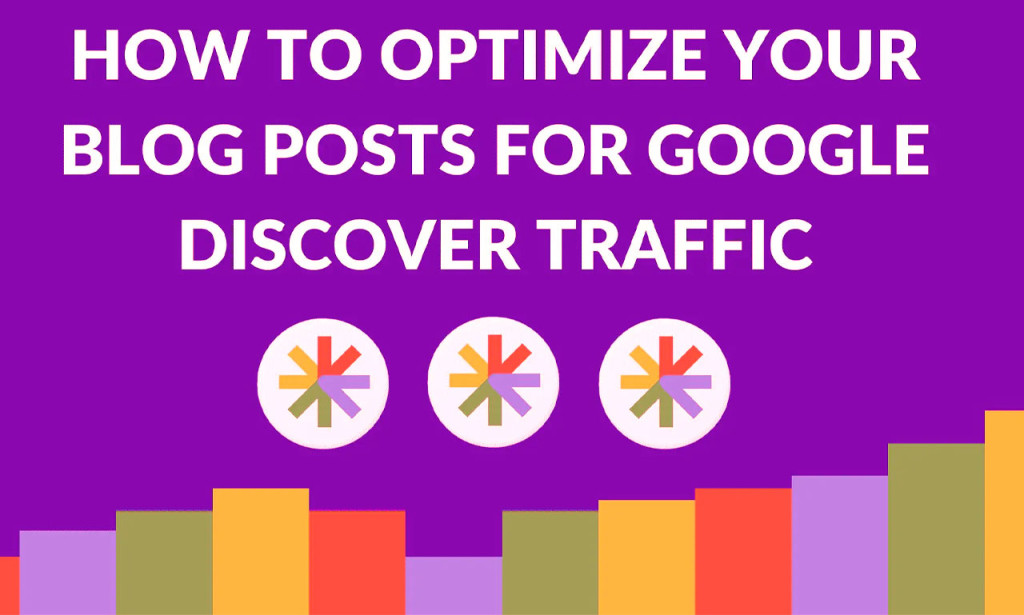Traffic from Google Discover – Every blogger wants it. It's like leveling up your blog and adding an extra traffic magnet. Google feeds content to an 800 million-strong Discover market without them searching for it or even knowing they need it. Blog traffic is gold.
Google Discover is getting smarter
using simple type-out search queries to deliver results to people. This change in how we find and experience content is part of Google's 'better content' ambition and - along with regular SEO - is an important tool to help your blog reach its full potential.But what is Google Discover and what is the secret of how to appear in the Google Discover feed everywhere?
Google Discover is another product of a smart, algorithm-driven, AI-enabled new world. As content becomes more valuable and incremental, the search path evolves. Interests are now just as valuable as keywords, and Google is getting pretty good at knowing exactly what users are interested in—much better than it can predict what keywords they'll choose to search with.
We explore what it means to have your blog content show up in Google Discover's ultra-personalized results feed. We'll look at the steps you need to focus on on how to optimize your blog for Google Discover traffic and give you some pointers to get you there.
What is Google Discover?
Google Discover search traffic
Google Discover is the next step in user mobile search customization. It assumes that it will deliver the content that a user wants to see, without them having to actively search for it. Google takes your information, including your search history, personal movements, app behavior, shopping habits, interests and other characteristics collected by their automated systems, and uses it to 'surface' or display a highly personalized content feed aligned to your interests and potential. demand. This makes creating an SEO for Google discovery strategy essential if you want your content to reach those feeds.
Also Read: Guest Blogging Techniques: How and Why You Should Guest Post
Goodbye feed, hello discovery
Google Discover has only been around since 2018. You may have noticed that Google Feed is no longer available – it's been replaced by Discover. Available only on mobile, Discover reaches nearly 800 million people and takes a different approach to search, improving on how its predecessor previously published content.
Where Feed primarily focuses on providing mostly text-based results, Discovery pushes from stories to videos, images, blog content and more. Discovery results are more personalized, less dependent on content applicable to a wider audience, and styled to be passively available to the user.
Google Discover vs. Google News
No, Discover is not Google News. Although they both work in the same context, delivering personalized information to the user, Google News requires people to enter a search query, while Discover does not. Google News pushes breaking stories and news related to users' stated interests and locations. Finds more closely aligned with your interests developed from your search history and other automatically collected metrics. In other words, you have to tell Google what news you want to see, while Discover guesses what you want to see.Two people of the same age and sharing similar characteristics will see many similarities when comparing their Google News feeds Although they want to contrast their Discover feed, they will see much more distinct and uniquely connected content threads that reflect each individual's own diverse interests.
Query-less searching
The development of Google Discover is part of Google's major changes to improve user experience, satisfy intent, and make finding information easier, giving us an idea of how to appear on Google Discover. Their stated ambitions include:Changing the search experience to more of a journey rather than an exercise in finding answers.
Moving away from the need to ask questions to get information, expect and deliver results more passively and on a more personal level.and enriching results with more visually stimulating information rather than mostly text-based answers.Discover aims to change the way people search by providing them with relevant information based on their historical interactions with Google. More relevant content aligned with user preferences means greater engagement and higher satisfaction. Who doesn't want the answer before knowing what the question is?

You must be logged in to post a comment.